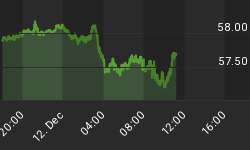Financial markets are being hammered by the speculation, as the world economy is entering into recession. The dollar should gain more ground against majors, while stocks might be targeting new lows.
A deep contraction is possible.
Here is the good news: The world will survive. Nonetheless, investor patience is going to be stretched to the extreme in 2012. Why? The European crisis is intensifying, while the U.S. is focusing on the coming elections. China dynamism is fading. What will be the results? Stocks and commodities will be hunting for the lows and the U.S. dollar could play the safe heaven role. The correction might last for the most part of the year.
Then, maybe in 2013, markets should resume their long term cycles. Commodity prices might head for the highs again. Gold could be the star. The U.S. dollar would possibly decline against the majors. In fact, the longer-term cycle, which began in 2002, is still bearish for the greenback. It might end along with a top in commodity prices. When will it happen? In the past 80 years, the C.R.B. index had 2 bull trends. They lasted 13/12 years (1938/1951, 1968/1980).
Europe: A few minutes away from midnight.
Of course, the hypothetical scenario does not contemplate the Euro-zone breaking into pieces. The outcome is possible, although is not probable at this moment. The European sovereign debt crisis is mostly a credibility problem and the faith in Europe is equal to zero right now. The German debt agency sold only euro 3.64 billion of its new 10-year bund instead of the expected euro 6 billion. The agency kept the difference hoping to place it in the future. However, incisive reforms are needed, since the big bang is approaching. Greece's default is expected by the first part of 2012. Other nations could prefer to leave the Euro-zone.
Germany is finally calling for a greater fiscal and political structure for Europe. The process, if accepted, will require time to be implemented. The E.F.S.F bailout fund, as an example, has not been approved yet. Europe remains a giant in chain. Nevertheless, austerity and fiscal measures are mandatory. So, growth should be mild for some time. The euro could decline to 1.28, 1.22 and eventually 1.16. The currency has shown the tendency to top/ bottom every two years. It bottomed lastly in 2010.
U.S.: ratings downgrade in 2012?
Recessionary winds are blowing. The U.S. economy has been resilient thus far. How long will it last? The Conference Board Index might have advanced in November, but should have stayed below the numbers shown in the first part of the year. Manufacturing would soon succumb to the world's slowdown. Finally, unemployment could increase again. In effect, solutions are sitting on a table in Washington D.C., but politicians are too concentrated in winning the coming elections. As a result, Congress might not be able to extend both the payroll tax cut and the unemployment benefits, after the Joint Select Committee of Deficit Reduction failed to reach a compromise last week. What could happen now?
The Congress might change the law in order to avoid about $ 1.2 trillion to go on sequestration. The operation will put the U.S. at risk of ratings downgrade in 2012. Consumer and business confidence will be affected. The S&P 500 index could decline to 1100 and possibly to 1040/900. The bearish cycle that started in 2000 is unfolding. It should last for 13/17 years top to bottom. In the past 30 years, stocks have bottomed within 3/10 months after bond yields have reached the long-term upper line. Highs were reached last in October.
















